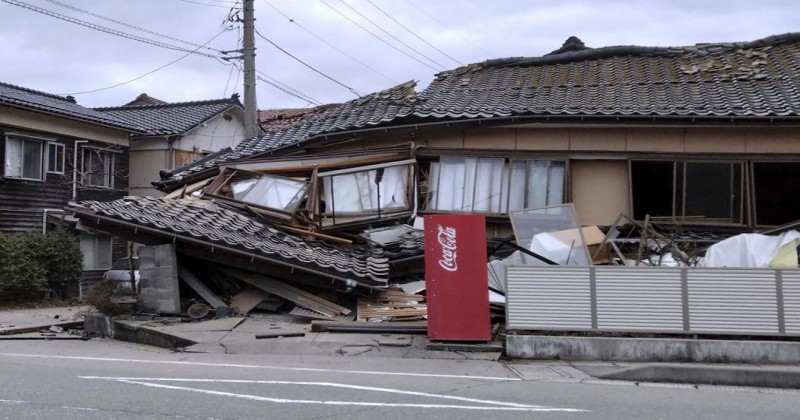
A series of powerful earthquakes struck western Japan, resulting in at least 13 casualties and causing extensive damage to buildings, vehicles, and boats. Officials urged residents in affected areas to stay away from their homes due to the heightened risk of additional strong quakes. A magnitude 7.6 tremor hit Ishikawa prefecture and surrounding areas, leading to ongoing aftershocks. Prime Minister Fumio Kishida emphasized the immediate rescue of people trapped in homes as a top priority, with a preliminary magnitude 5.6 quake occurring during his address.
Wajima city reported eight confirmed deaths, while seven others sustained serious injuries. The extent of home damage was challenging to assess immediately. Japan deployed 1,000 soldiers to assist in rescue efforts, acknowledging the large-scale destruction they faced. A fire in Wajima city added to the challenges, with firefighters battling to control the blaze that colored the sky with embers and smoke. Although nuclear plants in the region operated normally, concerns lingered due to the catastrophic events of the 2011 quake and tsunami that caused reactor meltdowns and radiation releases.
Videos showcased the aftermath, depicting rows of collapsed houses, flattened wooden structures, overturned cars, and half-sunken ships in bays affected by tsunami waves. The Japan Meteorological Agency issued a major tsunami warning for Ishikawa and lower-level warnings for other regions, subsequently downgrading and lifting them. Evacuated individuals sought refuge in auditoriums, schools, and community centers, while bullet trains were halted, highways closed, water pipes burst, and cellphone service disrupted. U.S. President Joe Biden expressed readiness to provide assistance to the Japanese people in the face of this natural disaster. Earthquakes are common in Japan, given its location along the seismic “Ring of Fire” in the Pacific Basin.

Post Your Comments